Today, I am very excited and honoured to have the lovely Maggy Woodley guest posting for us. Maggy blogs at Red Ted Art and has a great sound science experiment to show us.
Hello! Lovely to be visiting Science Sparks again. I think Science Sparks is doing AMAZING things in getting families and bloggers into science. Everyone is doing it now, be it in Science Hangouts or just having fun with the kids at home. HOORAY for Science Sparks. This makes it even more humbling to be here today with our simple sound experiment!
I usually blog at Red Ted Art and Life At The Zoo. Over on Red Ted Art, we have been making guitars. Which, of course, have a fabulous Science element to them: Acoustics! What is sound, and how does it work?
What is sound?
Let's recap: Sound is Energy. An energy that is caused by something moving backwards and forward - like the vibration on a guitar's string.
Sound reflection
For Science Sparks, we explored what happened to sound in different environments - have you ever been in a room with nothing in it? Does it sound echo-y? What is going on?
What is acoustics?
A smooth flat surface - such as brick, metal or wood, reflects sound - it makes it bounce and come back straight at us. Making it often sound louder (as we have lots of sound waves heading our way) and sometimes echo-y (depending on how large the room is and how long it takes for the sound to "come back to us"). This doesn't happen in a room that has a sofa, carpet and curtains - the soft furnishings absorb the sound.
Sound experiment
We can test this with our toy guitar!
We did three things and guessed what the sound would be like:
1) our fingers only
2) the container and elastic bands
3) the container, and bands, stuffed with a tea towel.
Fingers
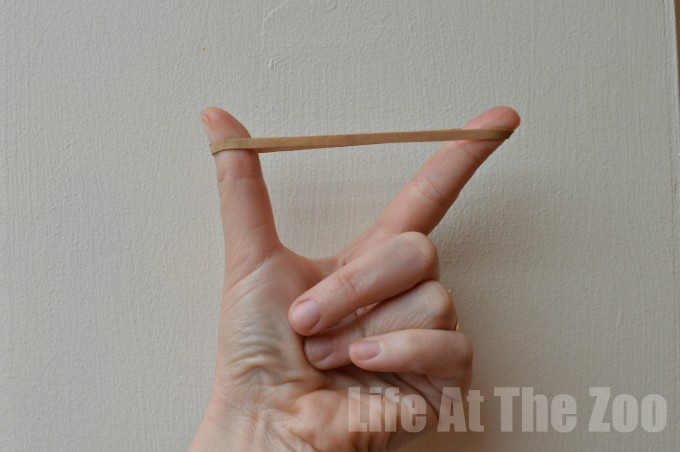
We have an elastic band on it's own - we can hear it, but we have to listen really closely. It also sounds "deeper". The sound is sent in all directions and "lost" in the large room we are in.
Container
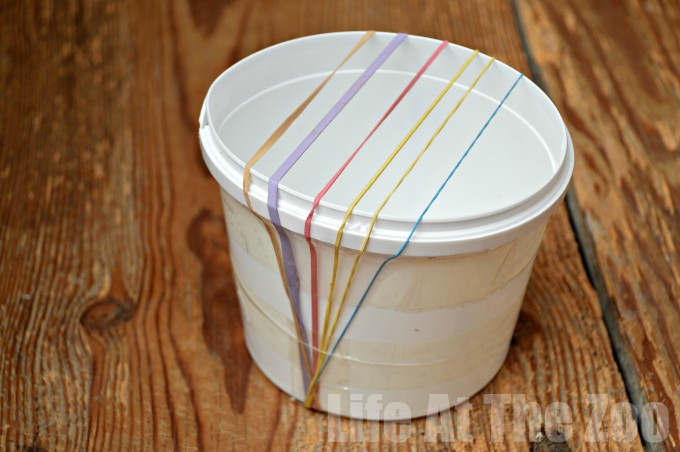
We have our empty container with the strings.
The sound is much louder and clear. As expected you can really hear the different notes clearly.
The container stuffed
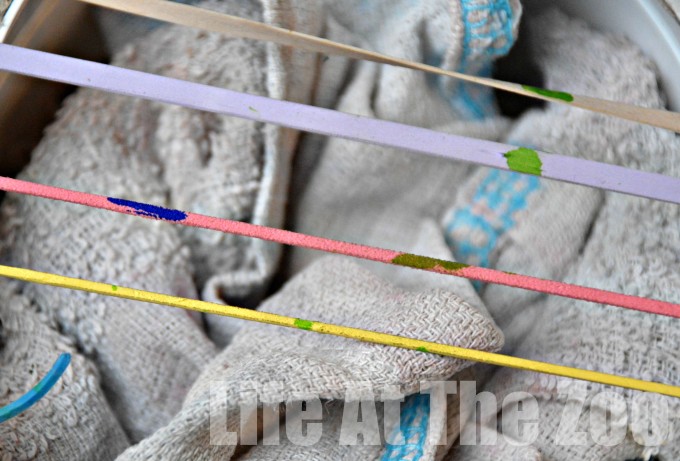
He stuffed a tea towel into the container - assuming it would absorb most of the sound. It DID sound a tiny bit quieter, but not as much as expected. I suspect that this is because our strings are wrapped all around the container and that it is still reflecting a sufficient amount of noise energy. Yes, some is absorbed, but we would have to stuff it with more to make more of a difference.
This is the fun of science - thinking about what you expect, observing what is happening and discussing results and finding explanations. I am now on a mission to find some objects that fully muffle our guitar (I suspect placing our duvet all around our container AND stuff it with something REALLY soft, will achieve the desired result!).
Thanks for having us and letting us explore Acoustics with this super simple sound experiment.
Last Updated on July 9, 2025 by Emma Vanstone
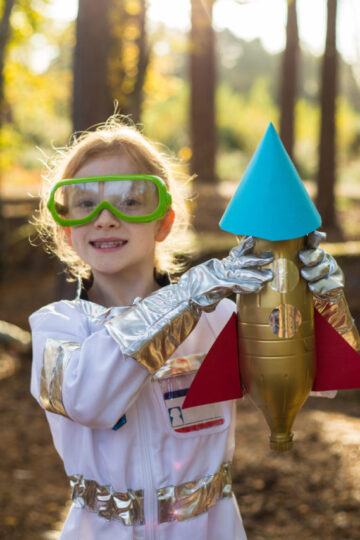

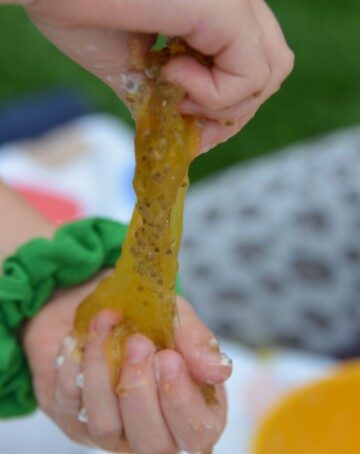
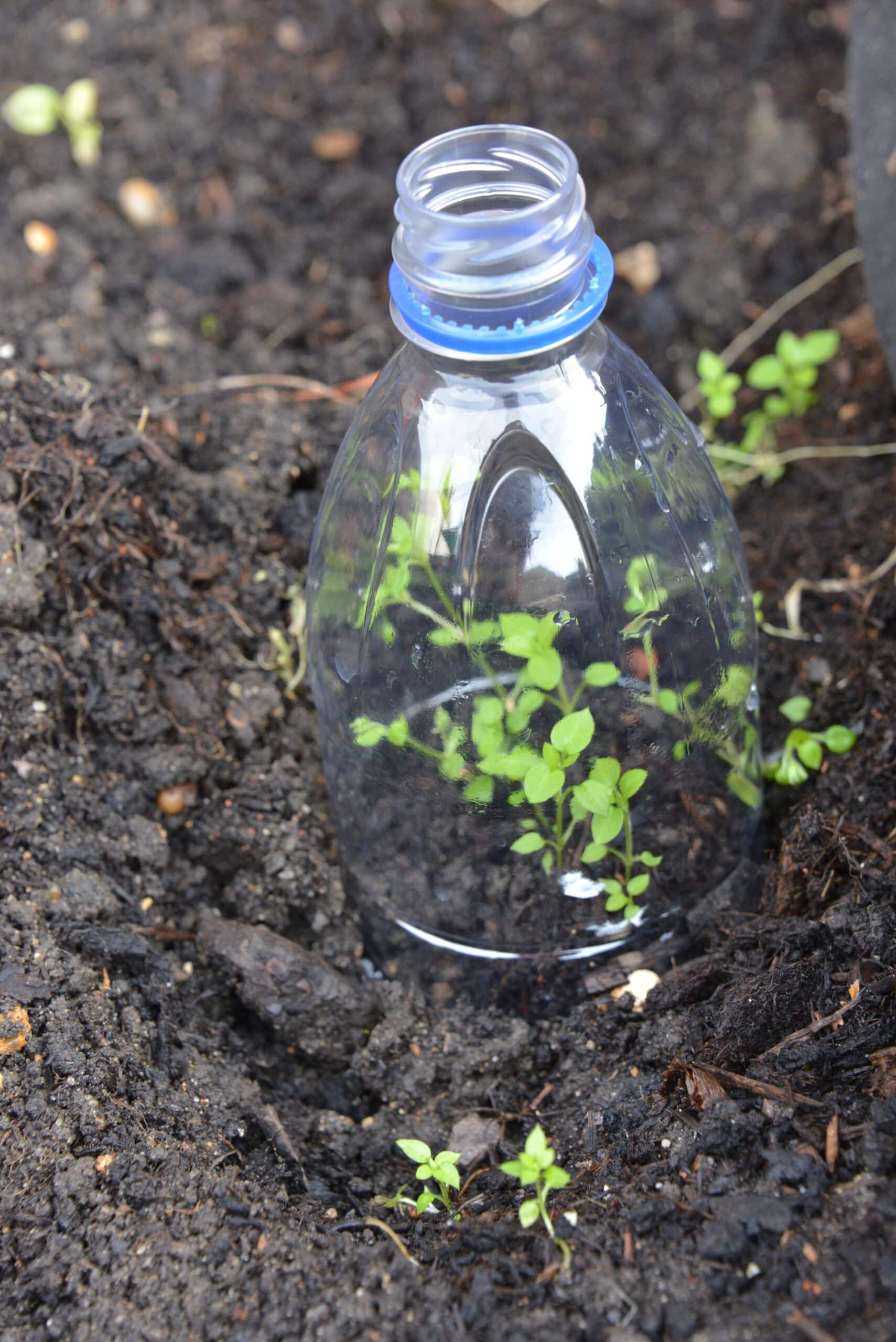
Cerys @ Rainy Day Mum says
This is fantastic - and what a great idea to explore science of music and how reflection and absorption of the sound can be changed.
Thank you for linking up to Tuesday Tots just to let you know that I will be featuring this over on Rainy Day Mum this week.